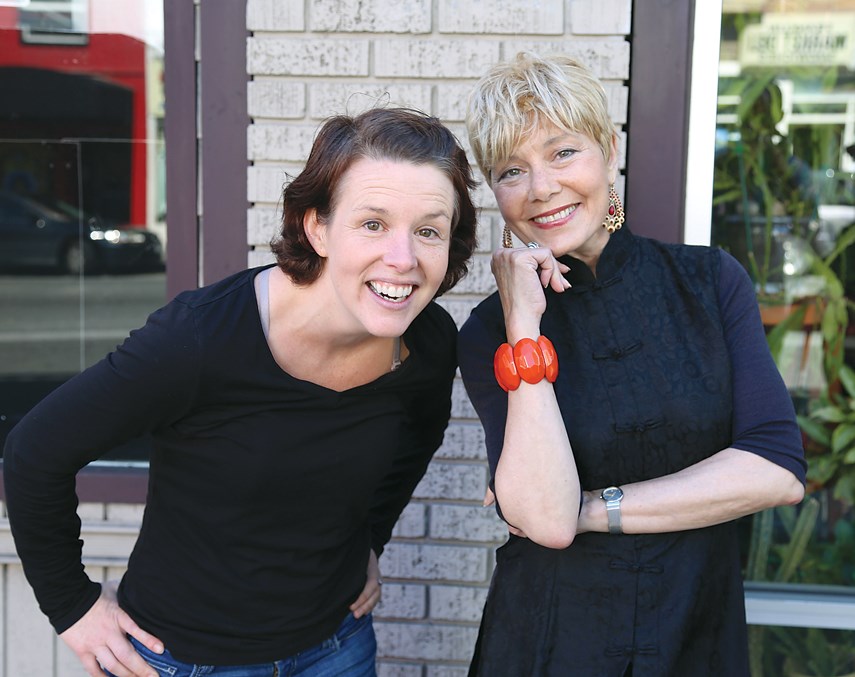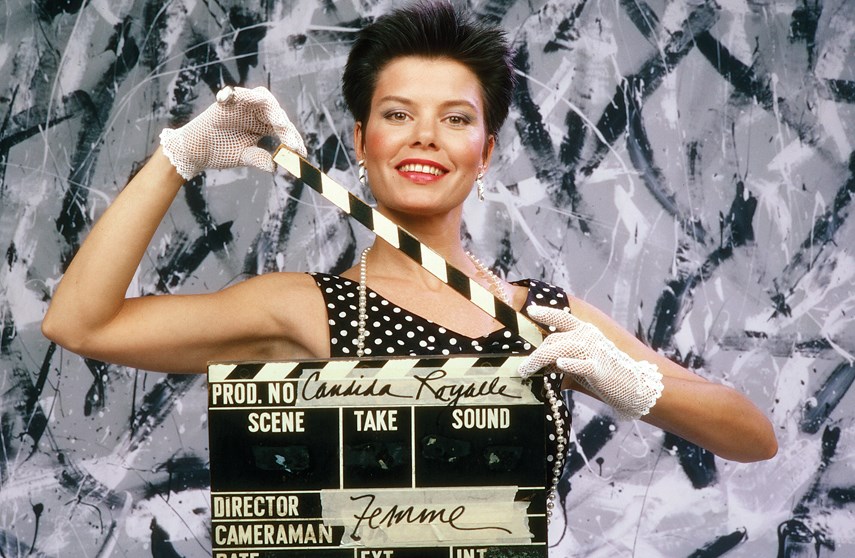Candice. Documentary screening as part of DOXA Documentary Film Festival, May 4 and 12. Various locations. Tickets: $15. doxafestival.ca/film/candice
The hardest questions are the ones we leave until the end.
Candice Vadala – better known as X-rated star turned revolutionary porno magnate Candida Royalle – had been diagnosed with ovarian cancer when she asked questions she’d lived with for a lifetime.
Who was my mother? Why did she leave? Who did she take with her?
Candice, a new documentary from Horseshoe Bay director Sheona McDonald, offers a last look at Vadala and the measures of pain and comfort she drew from the answers to those questions.
The two filmmakers met when McDonald was making Inside Her Sex, a documentary about female sexuality and overcoming shame. Vadala was an ideal interview subject, McDonald recalls.
“There’s something very vibrant about her when the camera’s turned on her, which it was for much of her life,” McDonald says.
Following the filming of Inside Her Sex, Vadala wanted to tell her own story in her own words. And she wanted McDonald to film it.
“We didn’t plan anything,” McDonald says. “We just rolled the cameras.”
McDonald watches Vadala trace her fractured family through old photo albums and a private investigator while the star’s beloved cats amble in and out of frame. We follow Vadala down the hallway where she had her first kiss (Vadala swoons with the memory, years of dance training suddenly in evidence as the 60 year old flits down the hall).
Vadala also talks about the man who tried to drag her into the woods when she was a teenager. She fought him, she remembers, swinging and struggling against his grip like, “a little caught animal.”
The filming was brief and intense, McDonald says.
McDonald suspects Vadala chose her to direct the documentary because of their similarities as strong, creative women.
“Probably what she saw in me that she liked were the same things that ended up irritating her,” McDonald says with a laugh.
In his 2000 essay, author Martin Amis suggests the job requirements for a porno star are exhibitionism and a ferocious sex drive. “And – probably – you need damage in your past,” he writes.
If it was damage that nudged Vadala from her bohemian lifestyle in San Francisco into adult entertainment, it came from her father.
A musician by trade, her father was affectionate when she was a little girl but withdrew as she and her sister became teenagers.
“I think he was afraid of his own impulses,” Vadala says.

While Vadala is generally unblinking, she’s a little cagey on the subject of her father; only saying her dad showed “inappropriate interest” in his other daughter, Vadala’s sister.
She felt rejected.
“The message was that the only way you know someone really loves you is if they desire you sexually,” Vadala says.
Vadala was in her 20s when she inquired about working in movies as an extra (“To support my art habit.”) when she was asked about appearing in adult pictures.
In the mid-1970s, porno theatres opened across North America, prompting Film Comment scribe Brendan Gill to write: “How lucky I am that this unexpected period of permissiveness should have coincided with my life, and how unready I am to have the period brought to a close by some new ruling of the courts!”
Vadala starred in about 25 films, complete with costumes and characters.
Her career followed the 1973 Supreme Court ruling which fundamentally changed the definition of obscenity. Art could be prurient but not obscene if the work had: “literary, artistic, political, or scientific value.” Hence, pizza delivery girls and cable repairmen.
In Candice, McDonald shows only brief clips from movies like Hot & Saucy Pizza Girls.
“I didn’t feel like we needed to see that much,” McDonald says. “I have a whole box of porn if you want,” she adds with a laugh.
The sexual revolution offered women the chance to say yes, Vadala explains, but it also seemed to take away the chance to say no. And as the porno industry shifted from film to videotape, Vadala seized the opportunity to say something. She became the guiding force of a production company that dispatched with the money shot and breast enhancements to put an emphasis on women’s perspectives and pleasures.
Appraising her documentary, McDonald notes that Candice contains some well-worn Vadala stories and a few things she’d never spoken of publicly.
“I guess it’s the same for all of us,” McDonald says. “We have stories that become part of how we exist in the world . . . and part of our own lore.”
The challenge for McDonald was in creating a film that would be intriguing for Vadala’s fans and eye-opening for the larger audience.
“Maybe that’s who the audience is, is people who didn’t know her work,” McDonald reasons.
Vadala died before the film was released, leaving McDonald with the weight of representing the icon’s life and doing right by the family and friends who loved her.
She ultimately decided not to include counterpoints or expert talking heads, ensuring the film’s dominant voice is Vadala’s.
“I get to hide a little bit behind her having told her own story,” McDonald says. “At least they’re her words.”



